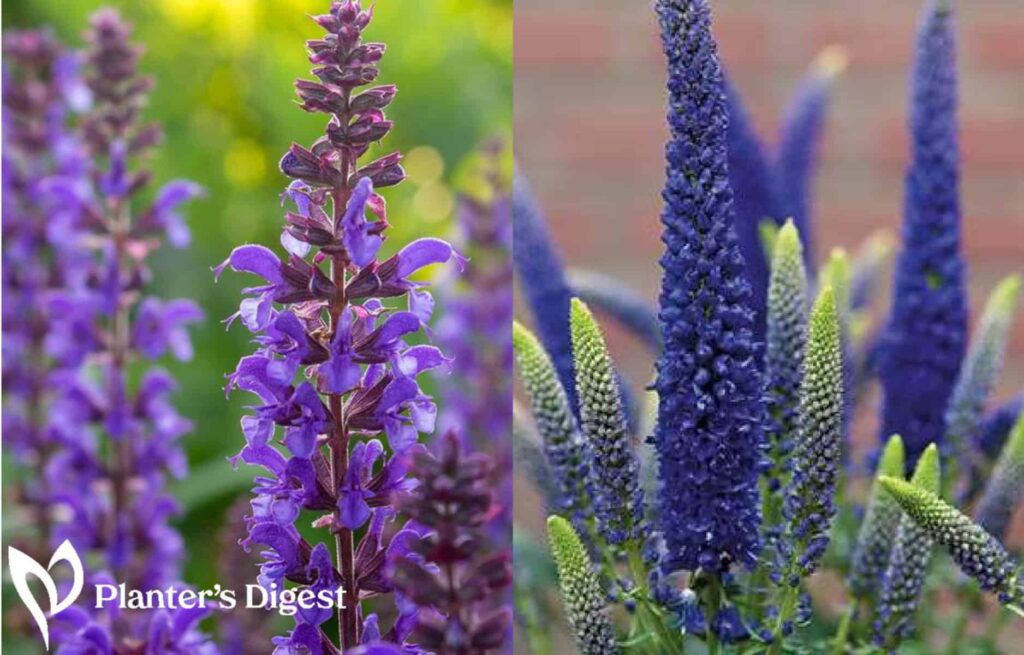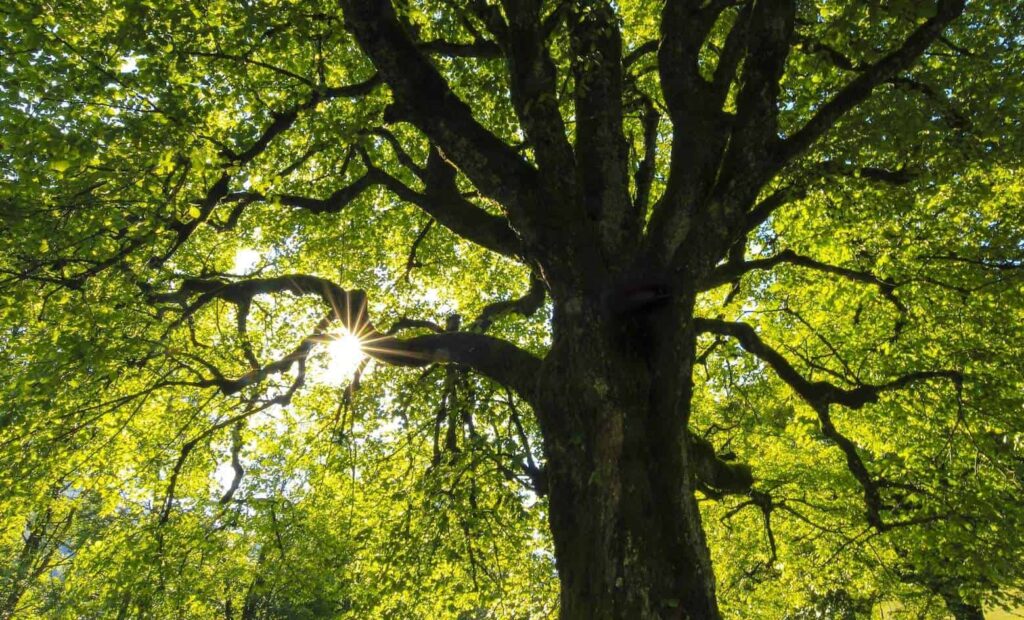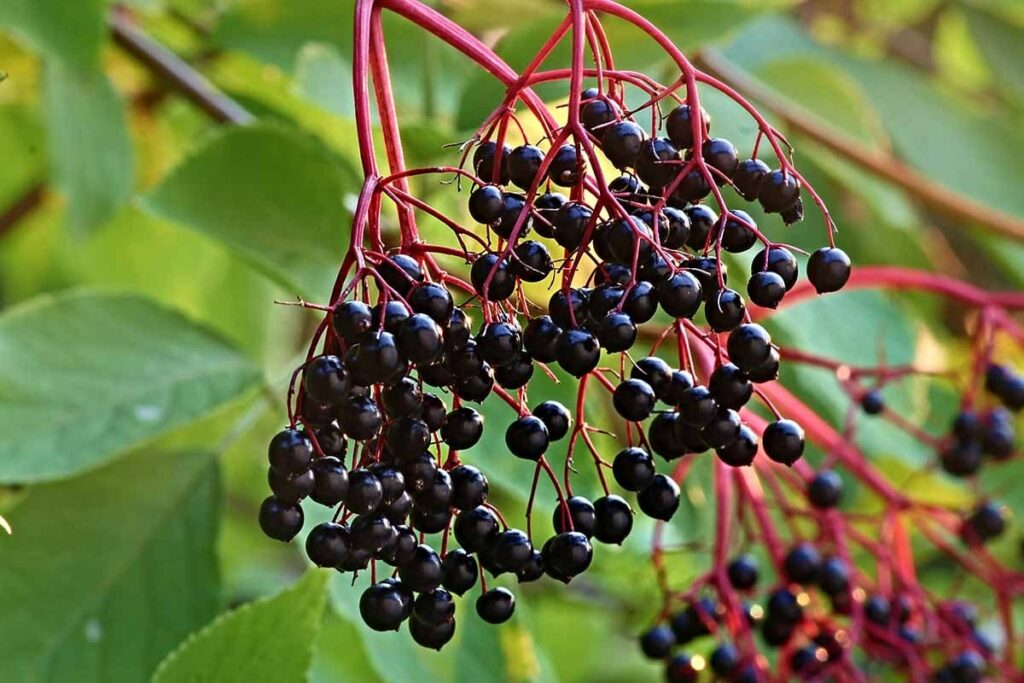Ever found yourself in a garden, admiring the blooms, and wondering whether you’re looking at Salvia or Veronica?
It’s a common puzzle even for experienced gardeners. But there’s no need to feel stumped—we’re here to demystify these two stunning plants for you!
Both Salvia and Veronica are beautiful and unique in their own ways, but they do have distinct characteristics that make telling them apart easier than you might think.
In this guide, we’ll explore the key differences that will help you confidently identify each one. So, grab your gardening gloves, and let’s delve into the delightful details of Salvia and Veronica to make your plant identification game strong!
Salvia vs Veronica: Overview
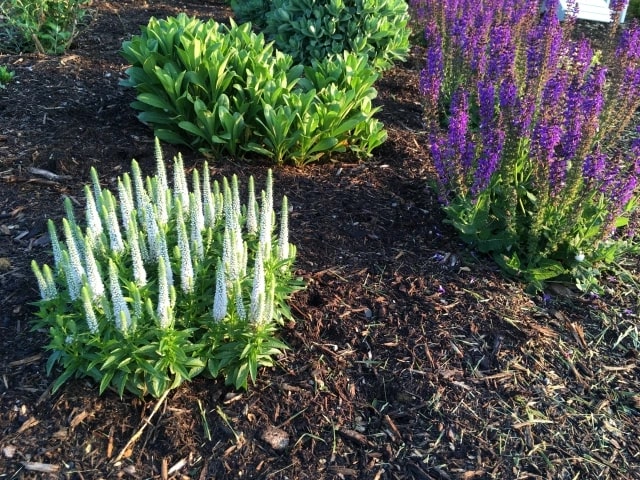
| Characteristic | Salvia | Veronica |
| Family | Mint | Plantaginaceae |
| Flower Shape | Typically tubular, with a wide range of colors | Spiky elongated clusters, commonly in blue, pink, or white |
| Wildlife Attraction | Bees, Hummingbirds | Bees, Butterflies |
| Sunlight Needs | Full sun to partial shade | Full sun to partial shade |
| Water Needs | Low, drought-tolerant | Moderate, somewhat drought-resistant once established |
| Blooming Period | Varies widely among species; generally from late spring to fall | From spring to autumn |
| Soil Preference | Well-drained, not particular about pH | Well-drained, moderately fertile soil |
| Color Variety | Wide range, including red, violet, blue, white, and pink | Primarily blue, pink, white, and purple |
| Cold Hardiness | Depends on the variety, some are very hardy | Generally hardy, especially in temperate climates |
Salvia and Veronica are two vibrant options that often catch the eye, yet they bring quite distinctive features to the table.
Salvia, belonging to a large family with various colors and types, is known for its resilience and ability to thrive in dry conditions, boasting vibrant flowers that attract bees, butterflies, and hummingbirds.
On the other hand, Veronica, with its tall, spiky blooms and slender elegance, offers a different aesthetic. This flower is celebrated for its hardiness in cold weather, prolonged blooming period, and ability to attract beneficial pollinators.
While both plants share some similarities in care and attraction to wildlife, their watering needs, sunlight preferences, and overall look place them in unique positions in the gardening world.
What is Salvia?
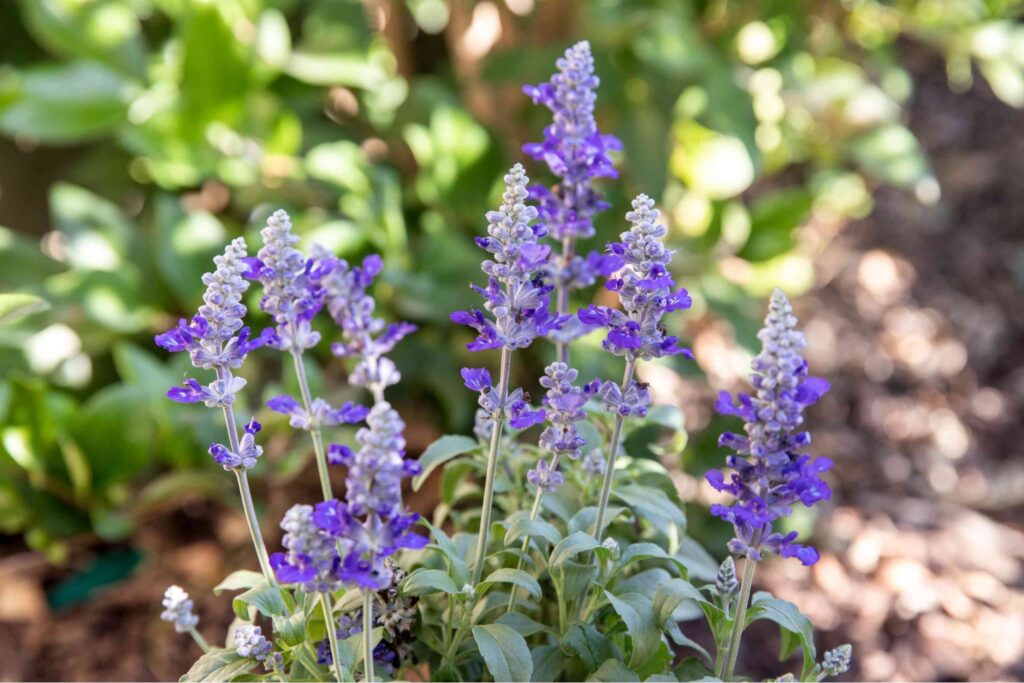
Salvias, also known as sage, is a member of the mint family, Lamiaceae, which includes both annual and perennial species.
They are highly valued in gardens worldwide for their vibrant and long-lasting flowers, which bloom in shades of blue, red, white, pink, and purple.
Now, you might be wondering, what makes Salvia so special? Well, it’s their incredible versatility. They’re like the chameleons of the plant world, feeling just as at home in a lush garden bed as they do in a rustic, dry climate.
Plus, they attract a bunch of pollinators like bees and hummingbirds. This makes them super useful for keeping a garden lively and helping other plants around them flourish too.
What is Veronica?
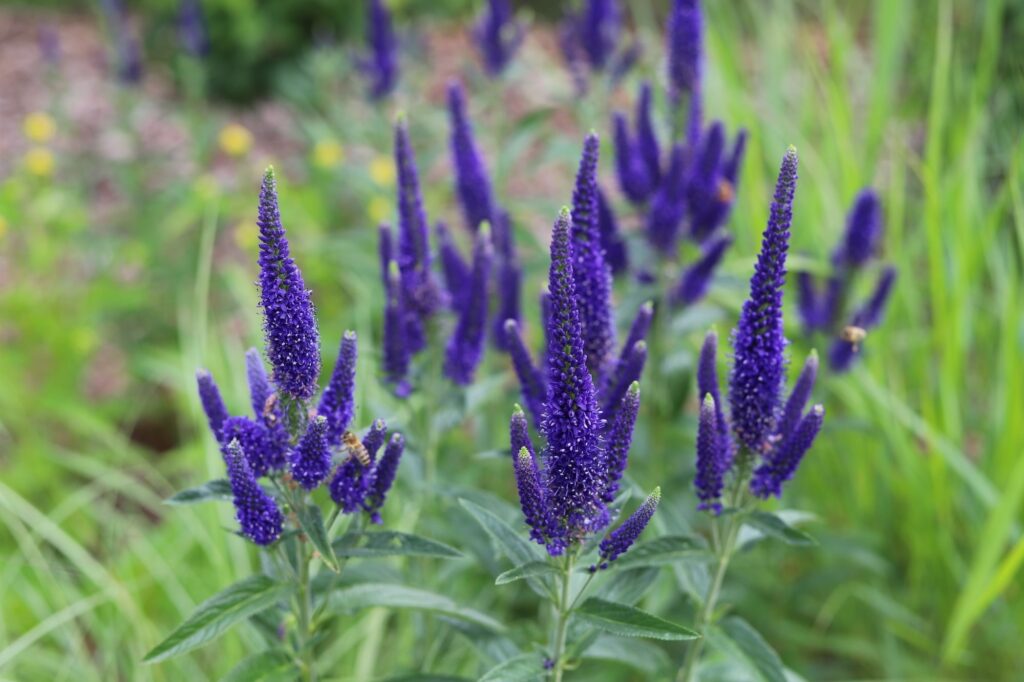
Veronicas, also known as speedwell, is a genus in the Plantaginaceae family, encompassing a range of species with herbaceous growth and floral charm.
These perennial plants are cherished for their spiky blooms, which come in a variety of colors such as blue, white, pink, and purple.
They’re tough little plants too. They can handle the cold pretty well, and once they’re established, they’re like the friend who’s always down for whatever—drought, sickness, you name it, Veronica can take it.
Blooming all the way from spring into late summer, they provide a lot of bang for your buck. Care-wise, you’re in for an easy ride. They grow happily in full sun or partial shade and aren’t picky about the soil.
The Main Differences Between Salvia vs Veronica
Origin
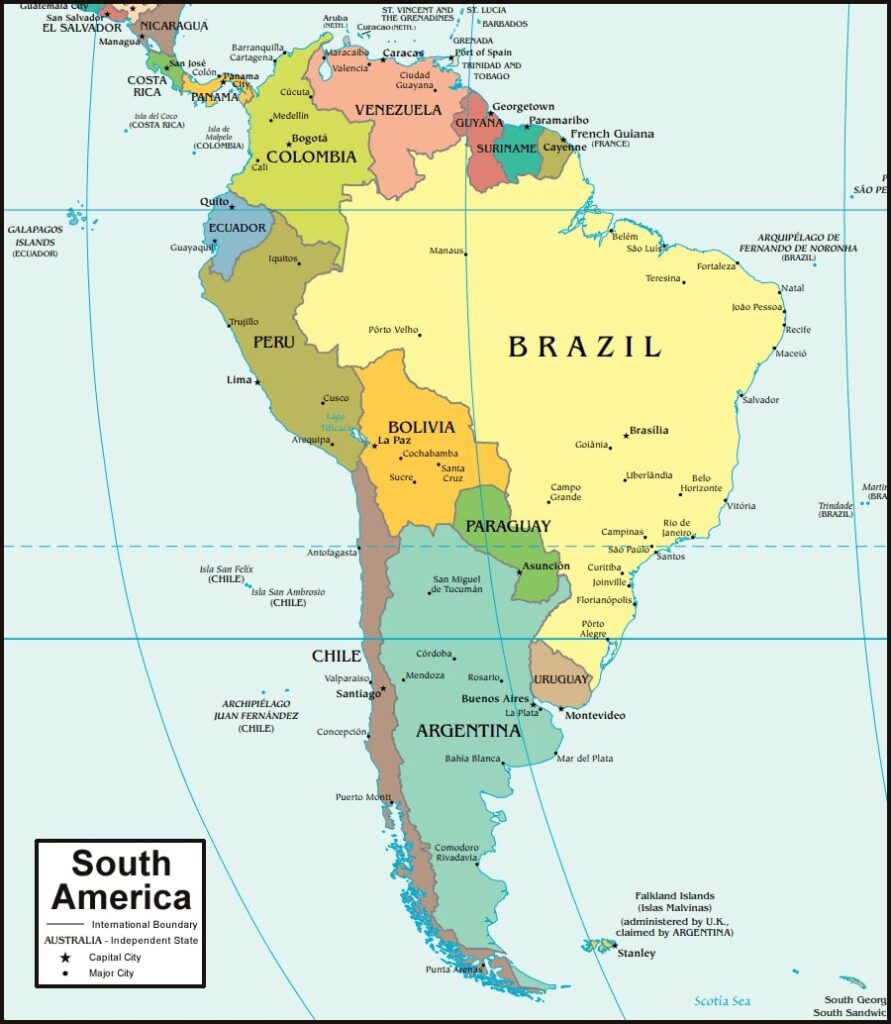
Salvia, with its roots in Central and South America, is quite the historical figure in the plant world. The name “Salvia” comes from the Latin word “salvere,” meaning “to save.”
This name reflects the plant’s long-standing use in herbal medicine, highlighting its importance across various cultures, particularly in the Americas. It’s a plant with a rich background, growing in many regions, and appreciated for its medicinal properties.
Switching over to Veronica, its story is a bit different. The origin of the name might be tied to Saint Veronica, but what’s clear is its widespread presence in Europe and Asia.
This plant has made its mark not through tales of healing but as a beloved addition to gardens and natural landscapes.
It’s known for its adaptability, thriving in temperate zones, and bringing a touch of beauty to different settings without the tropical requirements of Salvia.
Appearance
Height
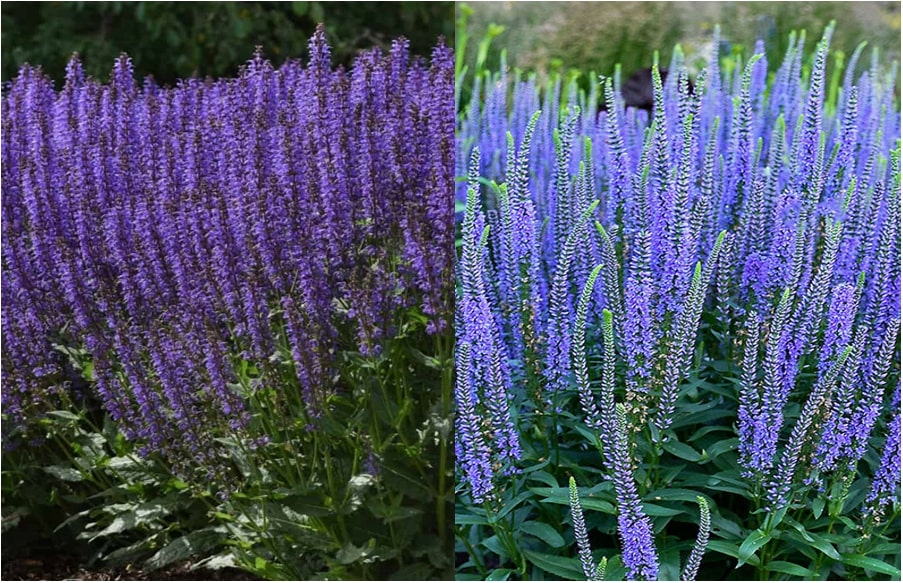
When it comes to height, Salvia and Veronica plants are like classmates who stand out for very different reasons.
Let’s talk Salvia first. This plant can be quite the show-off, growing anywhere from a modest 18 inches to a towering 5 feet tall.
Its height largely depends on the specific variety, with some species being more compact and others stretching up as they reach for the sun.
Now, onto Veronica. They are more on the modest side, usually hanging out in the 1 to 3-foot height range.
Unlike the sometimes towering Salvia, Veronica keeps it low-key, making it perfect for the front of a garden bed where it can show off its slender spikes of flowers without overshadowing its neighbors.
Stem
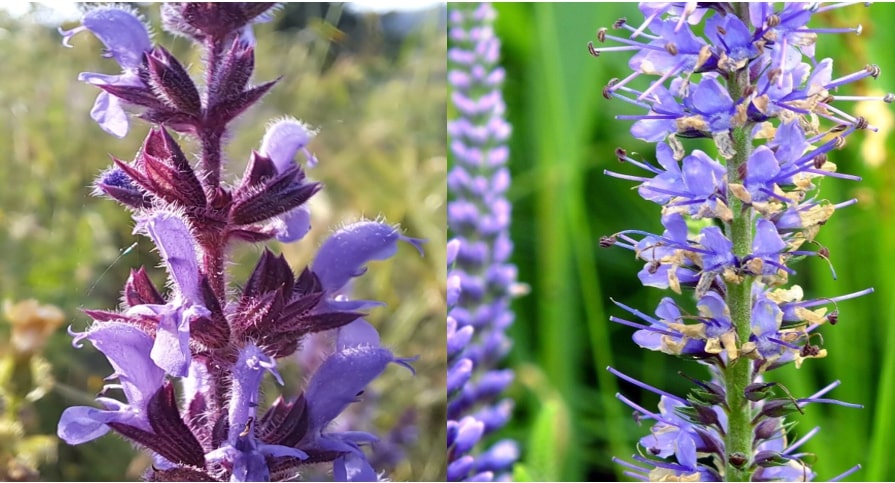
Salvia’s stem is often square-shaped, a common trait within the mint family. This structural feature not only supports its upright growth but also hints at its hardiness.
They can range from being quite woody in perennial types to softer and more herbaceous in annual varieties, making Salvia versatile in its growth habits.
Veronica, on the other hand, sports more rounded and sometimes semi-woody stems. These stems support its vertical, bushy growth, allowing the plants to flourish and spread comfortably in their environment.
While not as rigid as Salvia’s, Veronica’s stems are sturdy enough to hold up its beautiful, slender flower spikes that charm onlookers throughout its blooming season.
Leaves
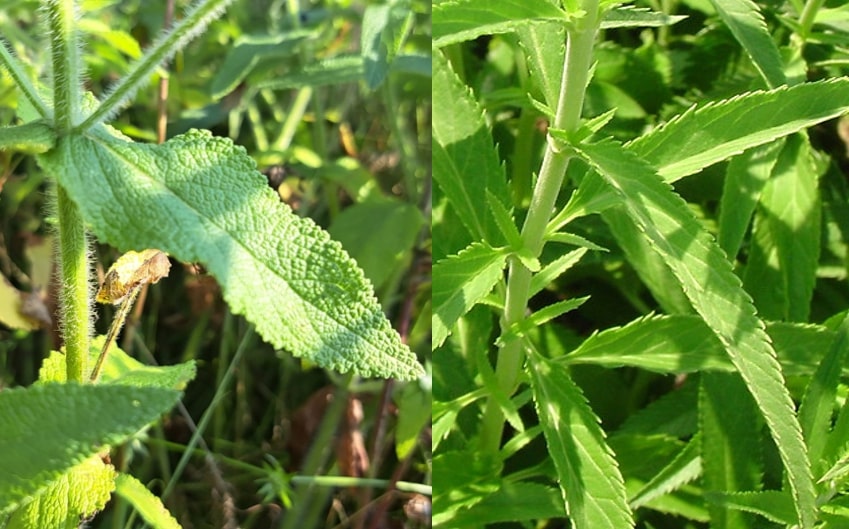
Salvia features these cool blue-green leaves that feel like velvet, with fine hairs making them super pleasant to touch. They have a darker tone, giving them a bit of a mysterious vibe.
Plus, they’re usually a bit bigger and feel sturdy.
Then there’s Veronica—those leaves are the zesty kind, bright green and sporting some fuzz. These leaves have a different vibe altogether. They’re more on the petite side, sleek, and sometimes have a bit of gloss.
Flowers
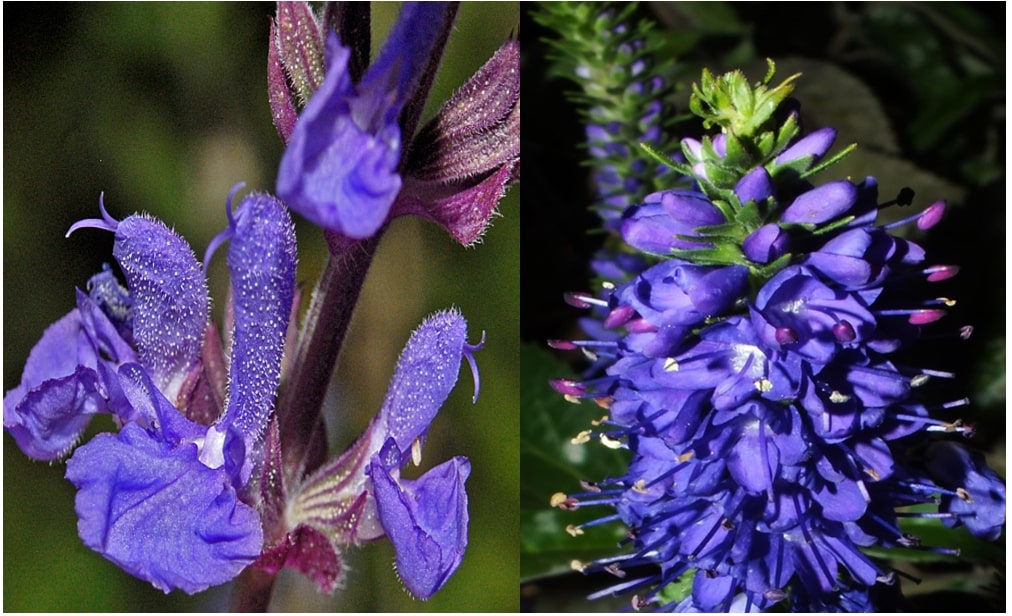
Salvia flowers are quite the showstopper with their tubular shape, resembling little trumpets ready for a jazz session. Perched on tall spikes, they tower over the garden bed, creating a dramatic vertical appeal.
Their vibrant colors—purples, pinks, and whites—draw your eye upwards.
Jumping over to Veronica, it features flowers that are packed into tight, elongated clusters, stretching up like slender fairy towers from the foliage. They display shades of blue, pink, white, and rose hues.
While Veronica might not reach the lofty heights of Salvia, its floral spikes are neat and precise. These flowers have a more delicate appearance, forming a dense line of color that emphasizes grace over grandeur.
Nutrition Facts
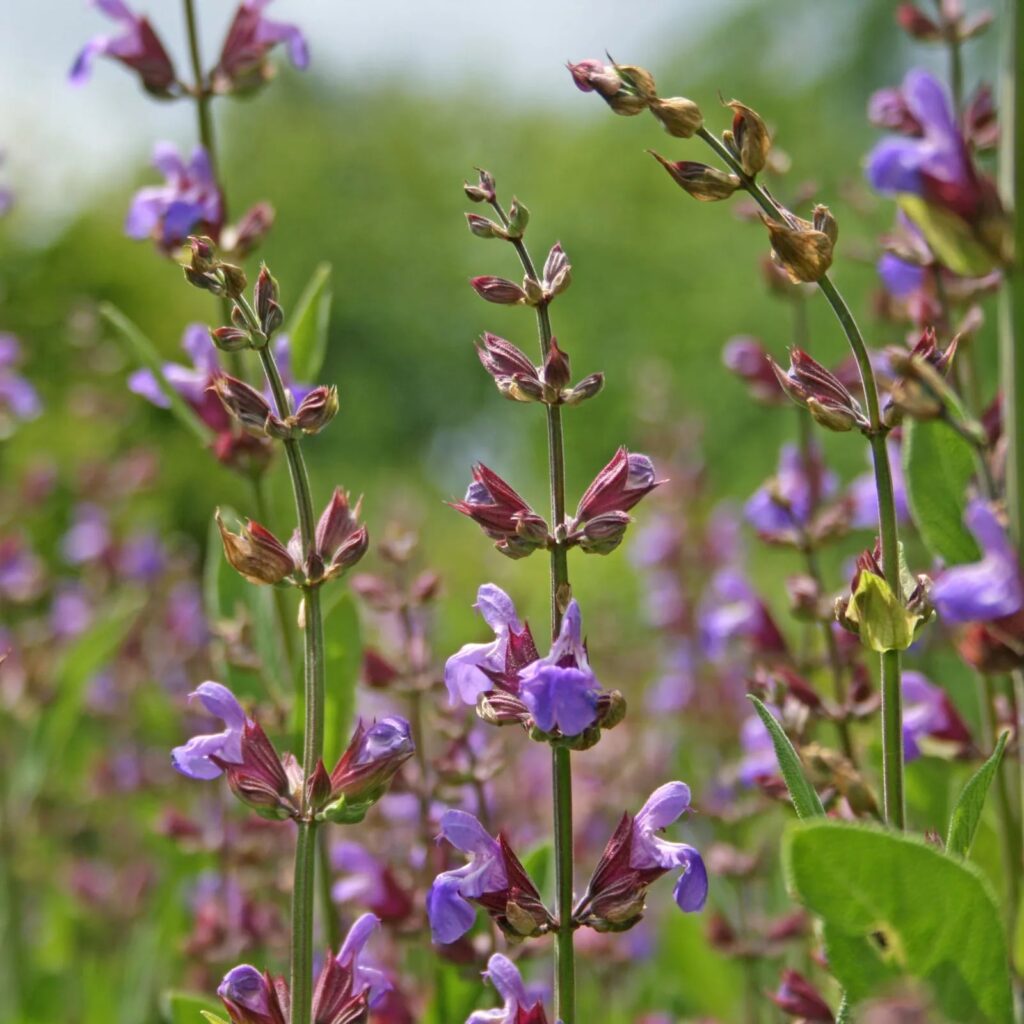
Salvia, often recognized as sage, and Veronica, also known as speedwell, are two distinct plants often used for ornamental purposes or their herbal properties.
Salvia is celebrated not only for its culinary uses but also for its medicinal properties, particularly the species Salvia officinalis. This plant offers a variety of nutrients, including vitamins and minerals, especially when used in cooking.
It contributes antioxidants and provides anti-inflammatory benefits.
In contrast, Veronica plants are primarily admired for their beautiful flowers. Unlike Salvia, Veronica doesn’t have a significant nutritional profile and isn’t commonly consumed for its vitamins or minerals.
Its charm lies in its visual appeal rather than its herbal properties.
FAQs about Salvia and Veronica
Are Salvia and Veronica plants easy to care for?
Caring for Salvia and Veronica plants depends largely on where you plant them and the specific variety. Generally speaking, Salvia plants do require a bit of attention to keep them looking their best.
You’ll want to prune them periodically to encourage bushier growth and more blooms. This also prevents them from getting leggy. Salvia is quite drought-tolerant once established, so you won’t be a slave to the watering can.
On the flipside, Veronica plants bloom a lot without needing a lot of care. To help them keep blooming, remove the old flowers. This helps more flowers grow and makes the blooming season last longer.
What are the common uses for Salvia and Veronica plants?
Salvia is often used in culinary dishes, especially the species Salvia officinalis (common kitchen sage). They are also popular in herbal medicine.
Veronica is primarily used for ornamental purposes, beautifying gardens with its long-lasting and colorful flower spikes.
Are Salvia plants deer-resistant?
Many Salvia species are known to be deer-resistant, which makes them a great choice for gardens in deer-prone areas. Veronica has some resistance but may not be as reliable as Salvia in deterring deer.


